Guardians Vol3: How they delivered those brilliant CG character performances
In Guardians of the Galaxy Vol. 3 we got to see Rocket Raccoon’s backstory and the friends that Rocket first met in the sadistic lab of the High Evolutionary. This story is the last in this series, check out the Fxpodcast with Stephane Ceretti, the Production Visual Effects Supervisor here and Hallyway Behind the scenes here.
Alexis Wajsbrot was the Visual Effects Supervisor at Framestore for Guardians of the Galaxy Vol. 1 and headed the incredible animation and effects team that provided a huge range of shots including the backstory sequences.
Shooting “Pre-viz”
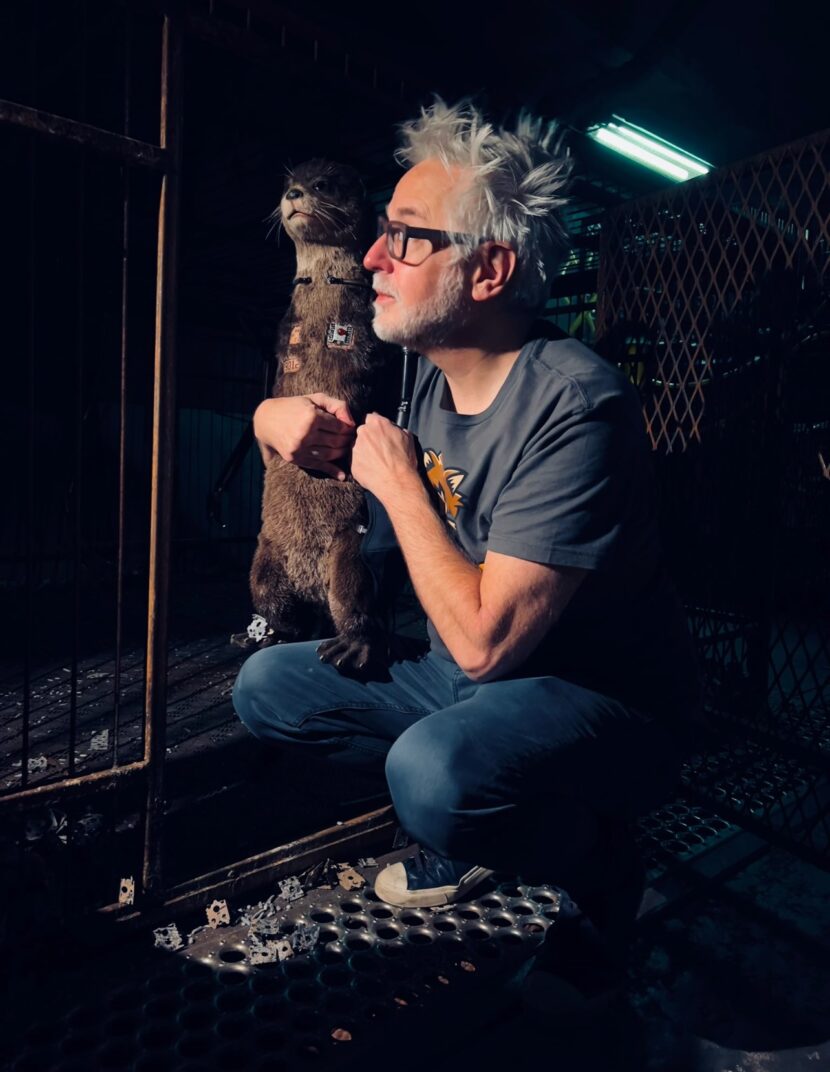
Director James Gunn shot over two days, the entire flashback sequence. The actors who provided the voices for (Younger) Rocket, Lylla, Teefs, and Floor performed in motion capture suits to allow for blocking and a virtual cinematographer. The actual motion of the actors was not used, but having them in MoCap suits allowed for a visualization to be created that in turn let the correct camera work be captured. As seen below the capture exercise helped solve the blocking, but in addition, with the exception of Rocket (later revoiced by Bradley Cooper), all the final dialogue heard in these scenes was recorded live on the day as the performers acted with and reacted to each other.
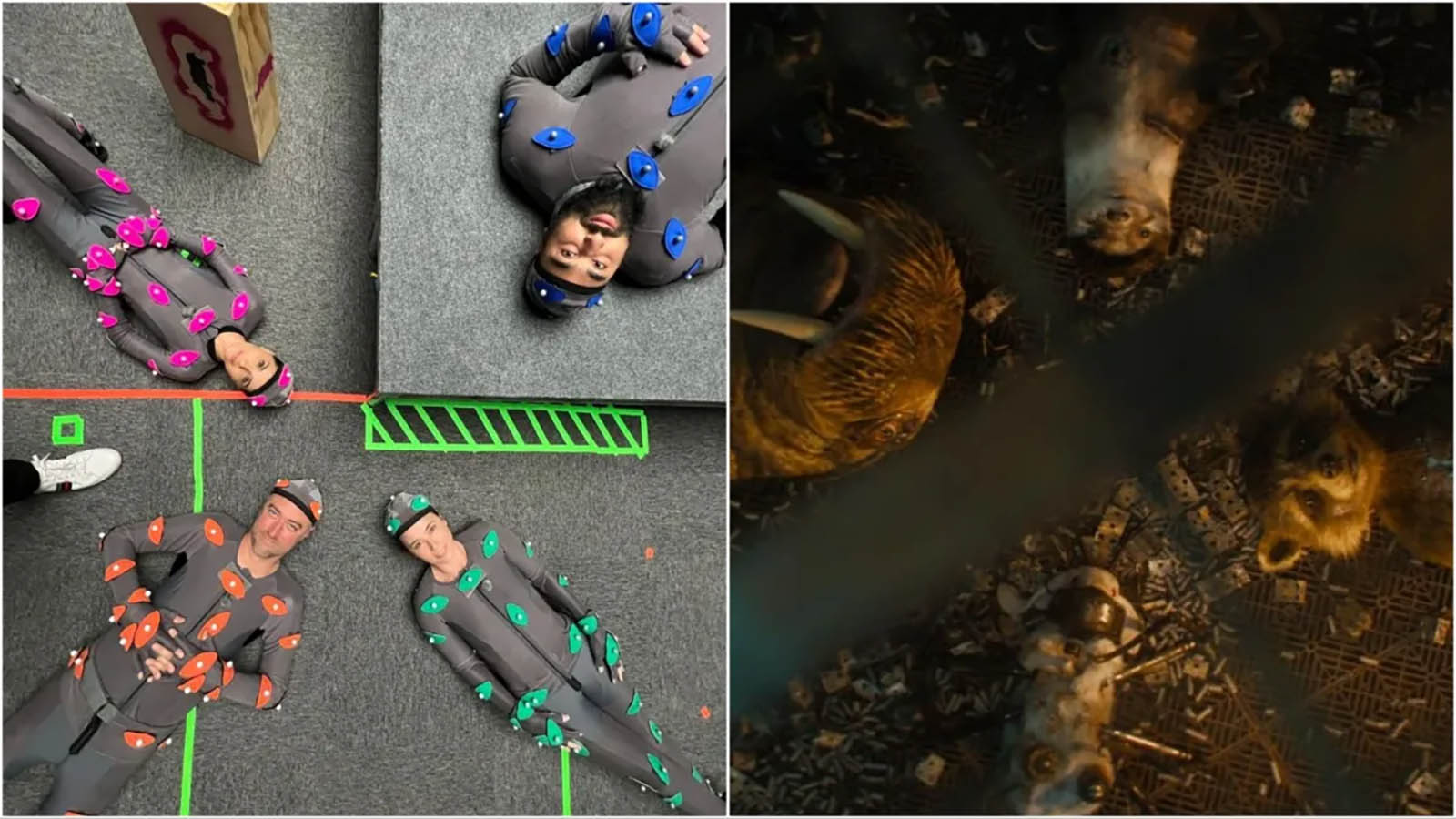
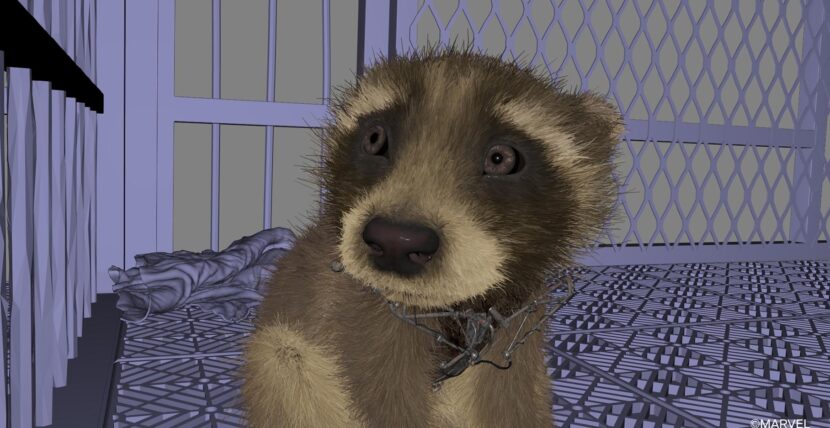
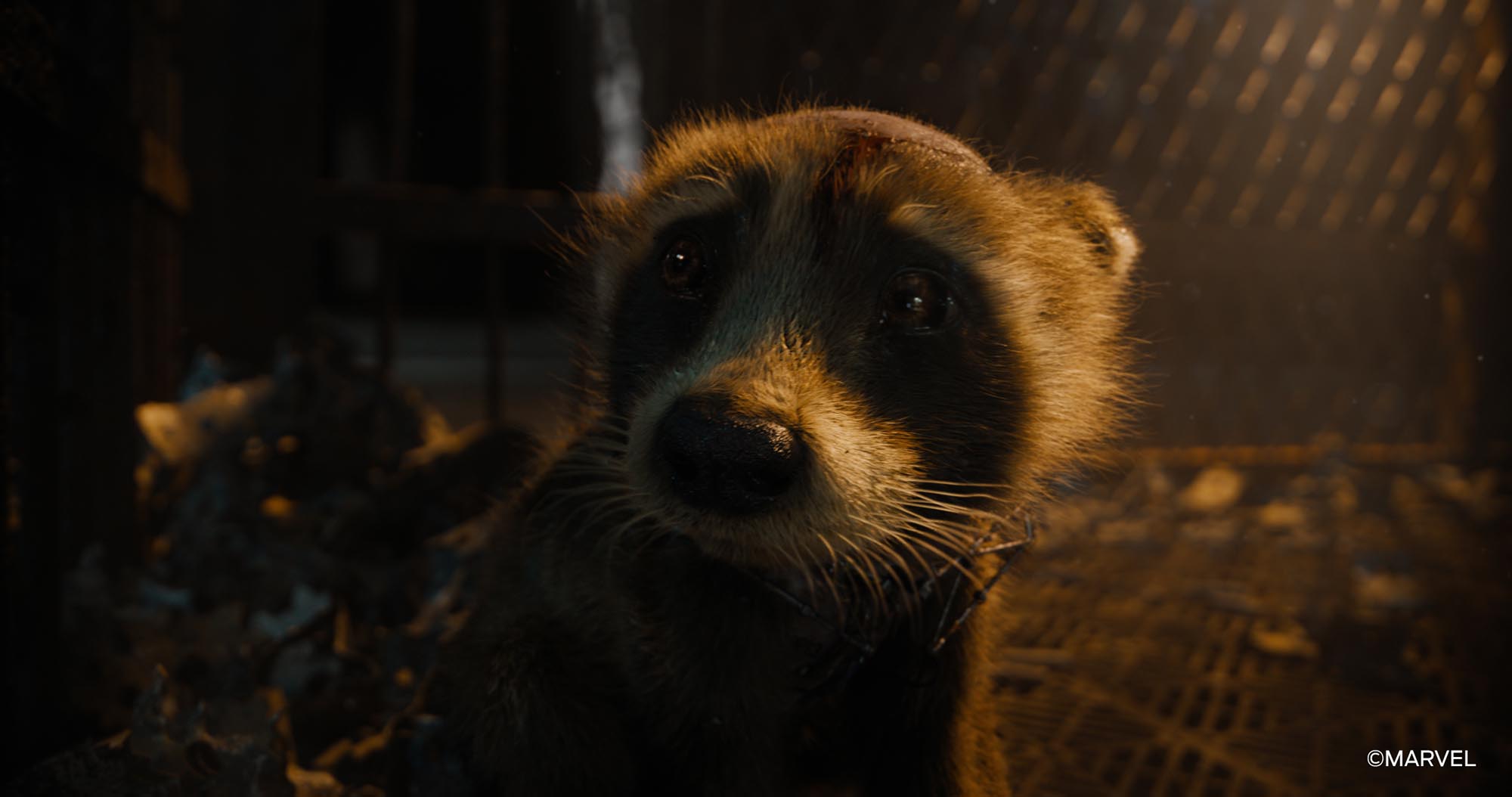
In the film, around 80 to 90% of the flashback virtual cinematography of the final shots was captured and used directly. The actors performed on a scaled set, but the motion capture itself was never going to be able to be used, as the re-targeting was too extreme to be useful. The benefit of working this way was that it allowed not only the voices to be recorded as the actors moved around their spaces, but it also provided excellent reference to the key-frame animators who would bring these characters to life on screen.
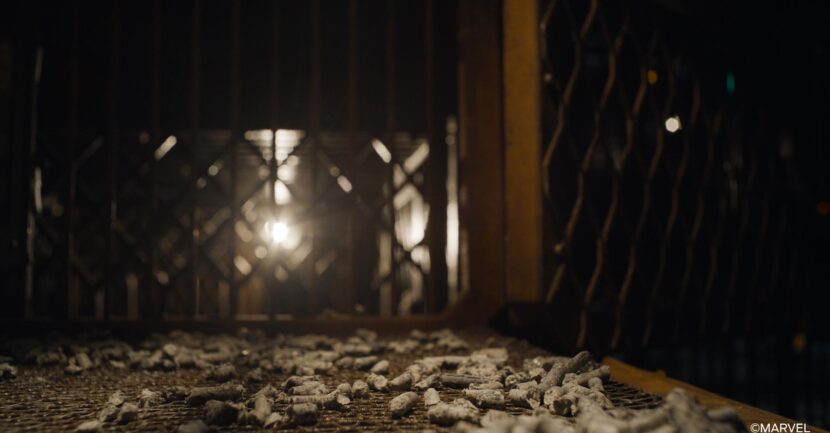
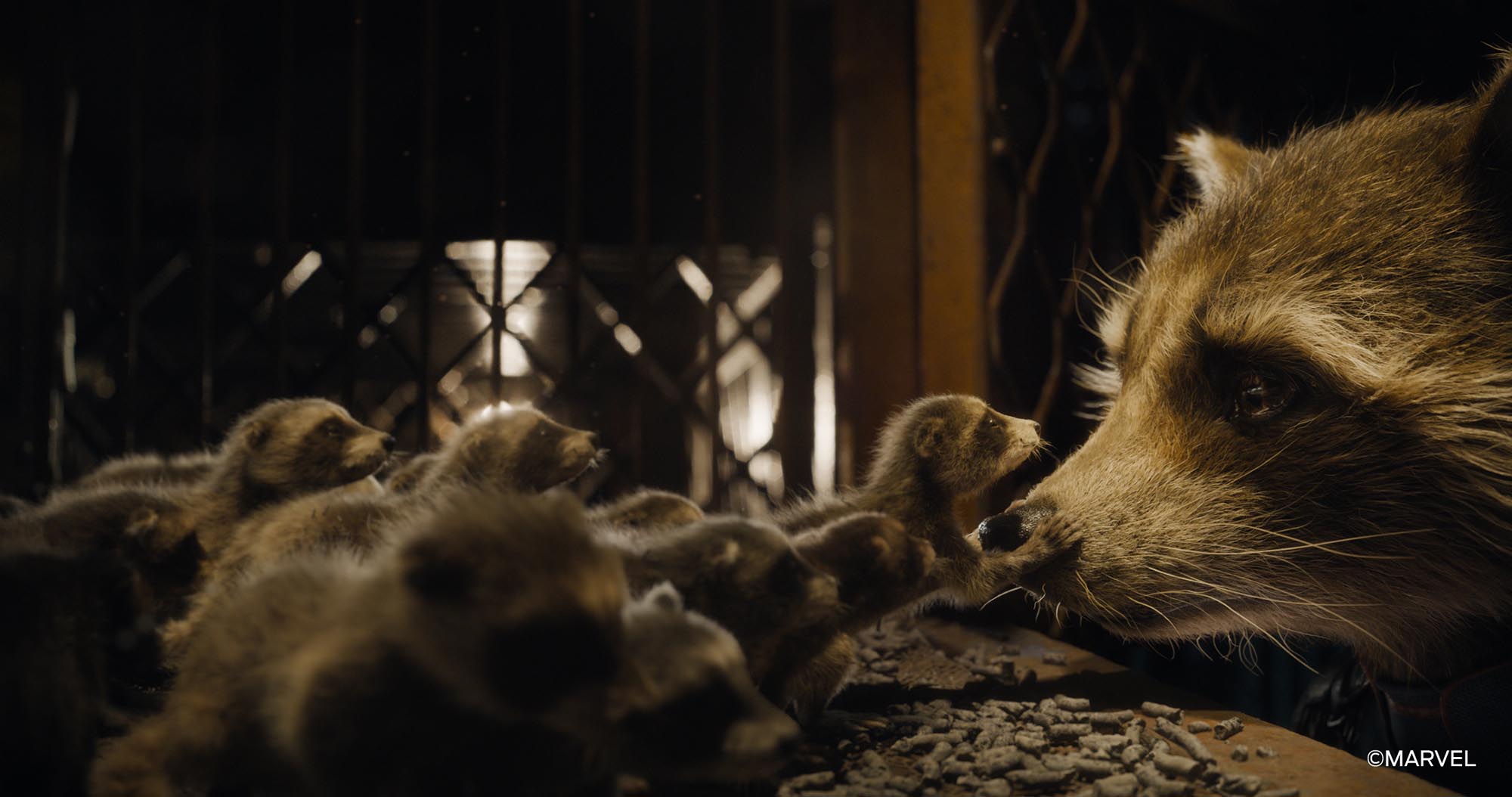
The flashback was filmed in one block before principal photography, the only actor not present was Bradley Cooper, who voiced the adult Rocket. For his shots, Rocket’s voice was done with traditional ADR approaches.
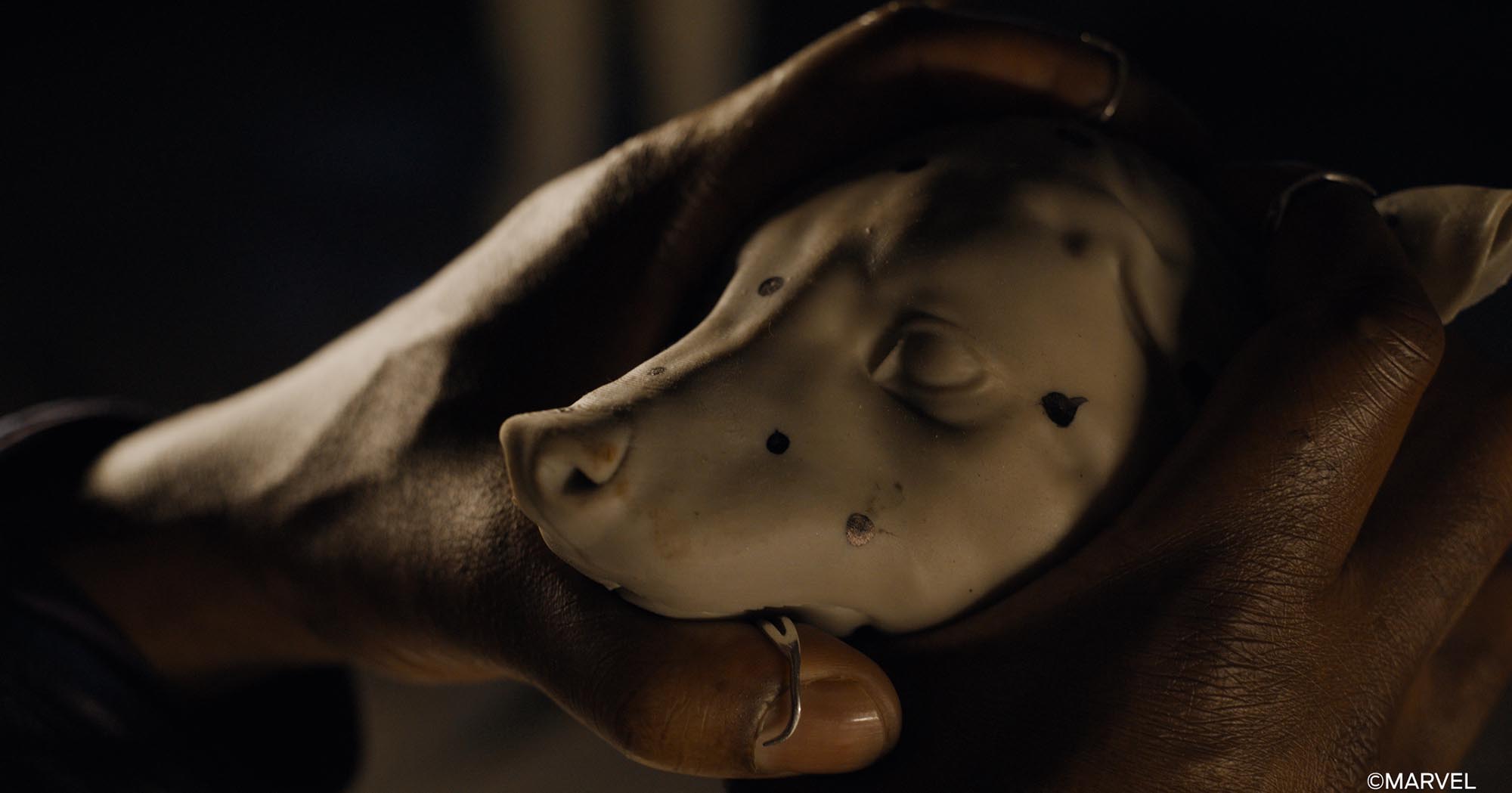
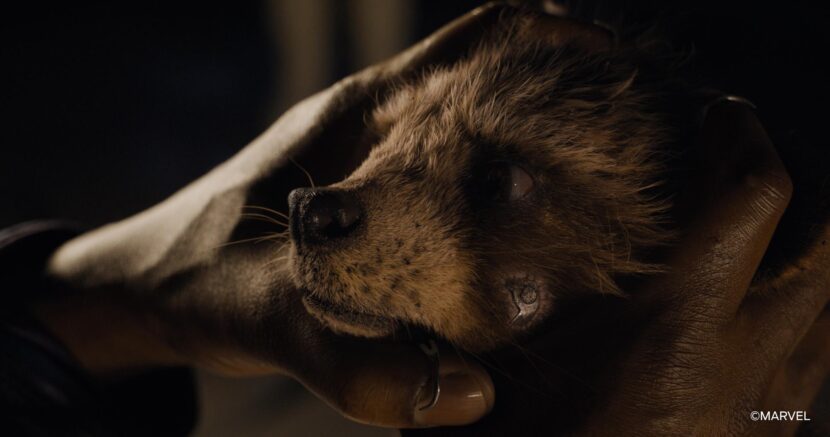
Framestore had multiple teams in various offices working on the project, including a dedicated team in London doing the flashback sequences. The Framestore team rendered using their Freak in-house modular path ray tracer for all the character sequences.
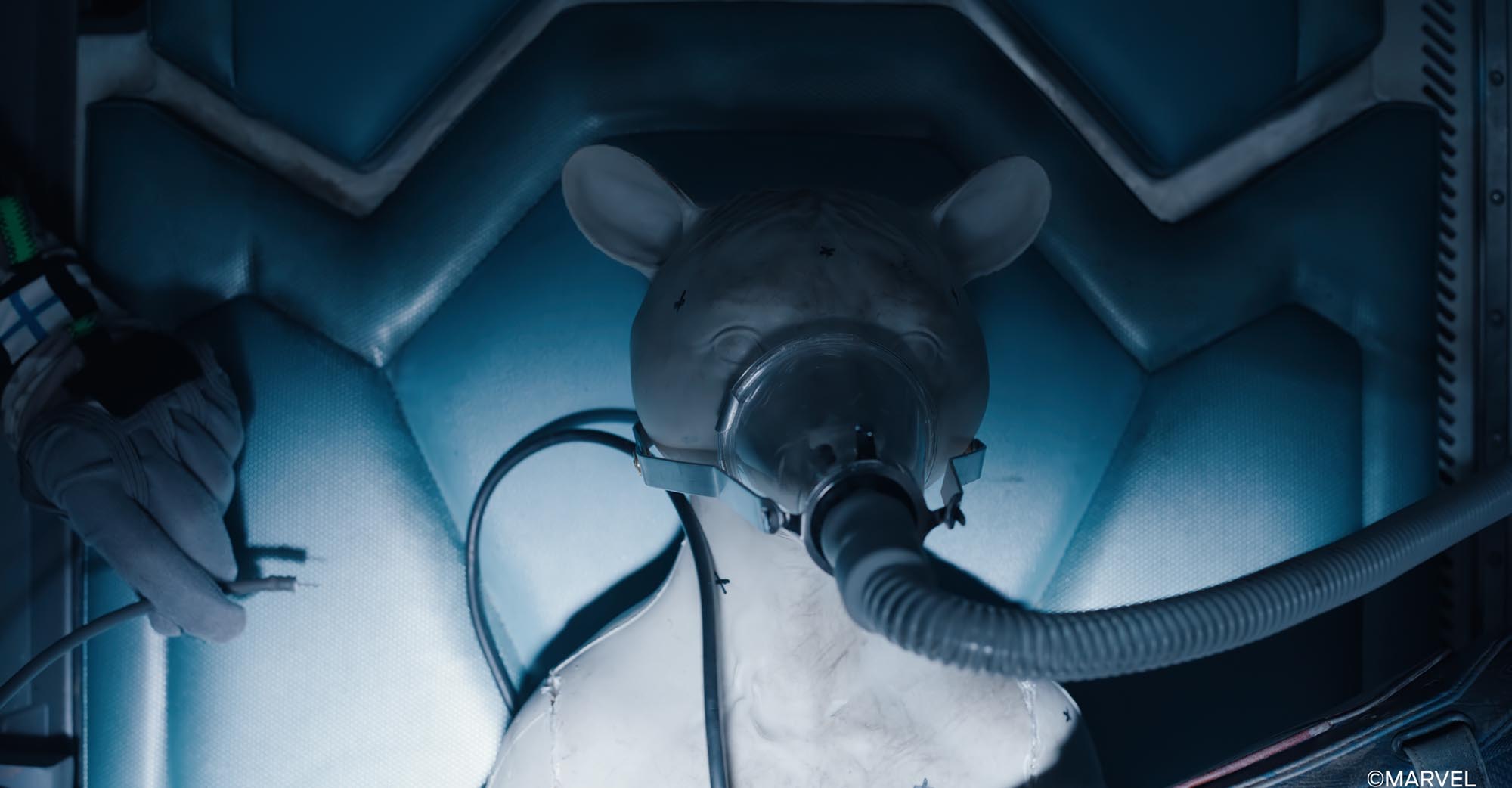
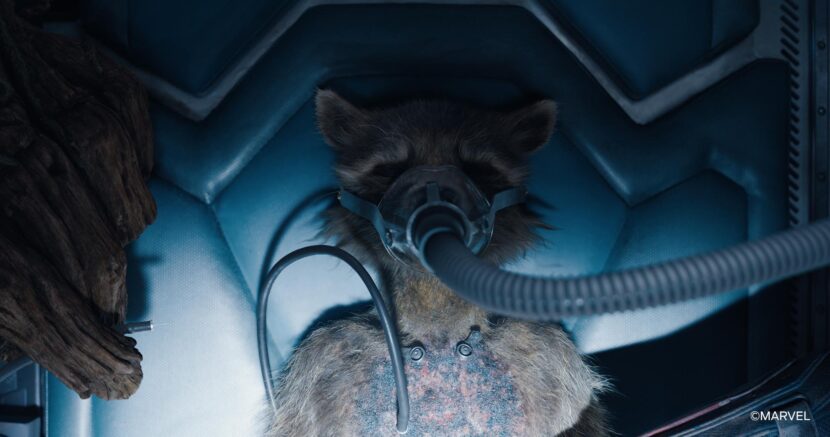
There were multiple Rockets at different ages plus the Rocket that was lying dying on the first aid table.
Once the baby rocket was solved – the team did a blend between the various models from the baby rocket and the well-established fully-grown Rocket model. “I thought it was going to be a test that did not give us much,” recalls Wajsbrot. “But in the end, it was just SO useful. Suddenly, we had a character on all fours with no shoulders, growing up – developing shoulders, forming his adult look – it was so useful. It looked fantastic and that become the basis of each sequence of Rocket throughout the various flashbacks.”
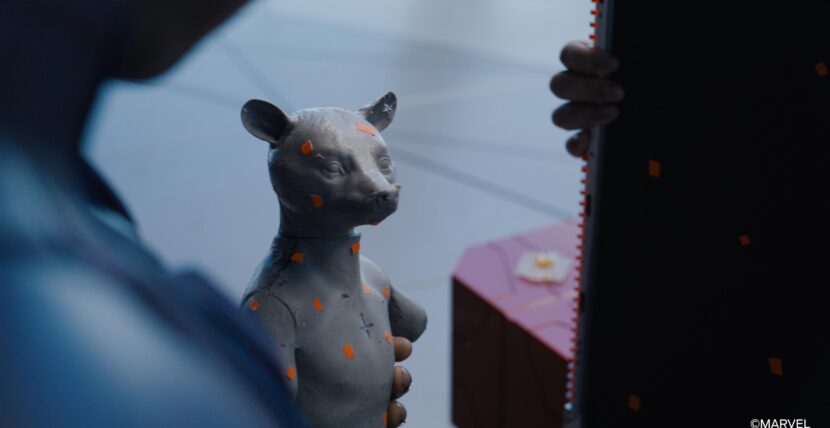
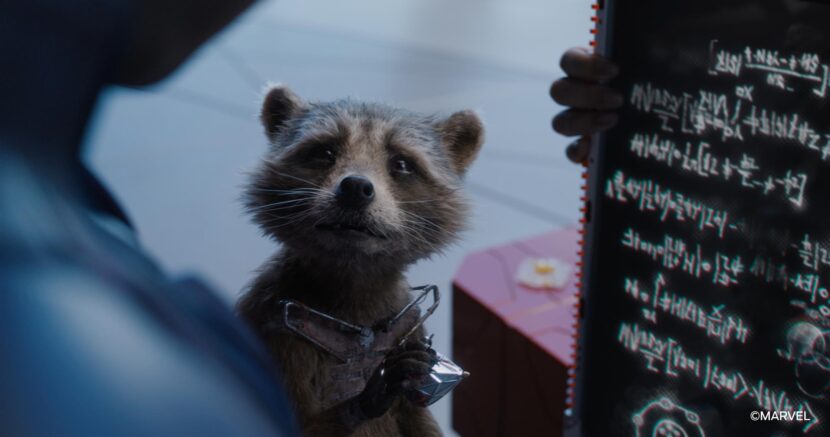
Rocket’s friends
Rocket’s friends are a rabbit called Floor, a walrus named Teefs, and his closest friend, an otter: Lylla.
Lylla
Linda Cardellini played Lyllla the otter. The team examined many otters, to get Lylla a very specific look and the team went further on her development than any of the others except perhaps Rocket. As one might expect the very detailed eyes of Lylla really defined the character. “She’s just so sweet, and so even if she was standing in a somewhat neutral pose, we wanted that ‘sweetness’ to be visible to the audience,” comments Alexis Wajsbrot.
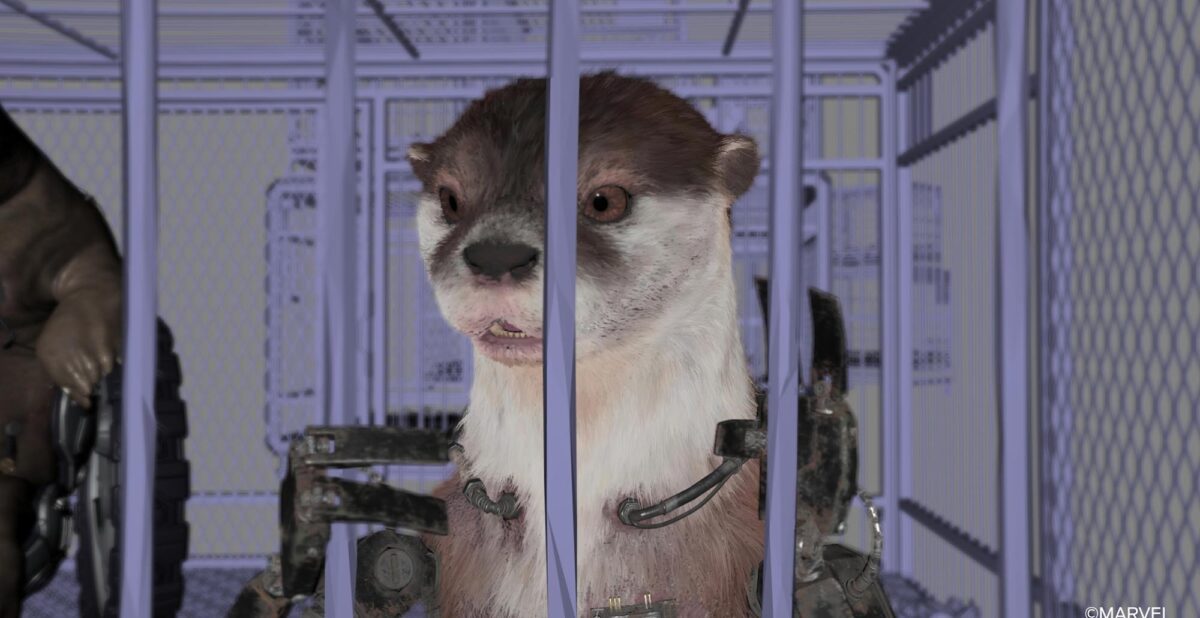
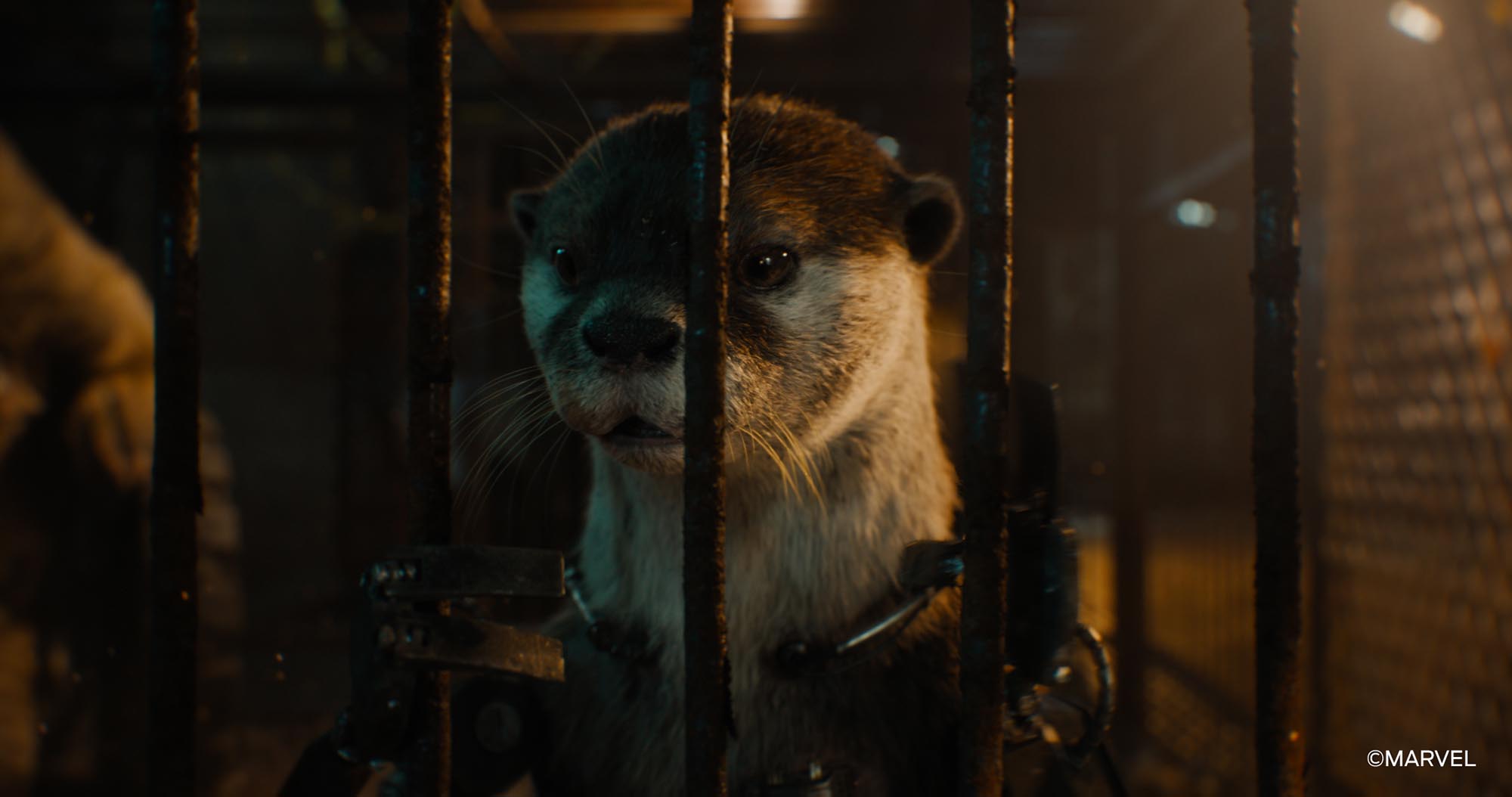

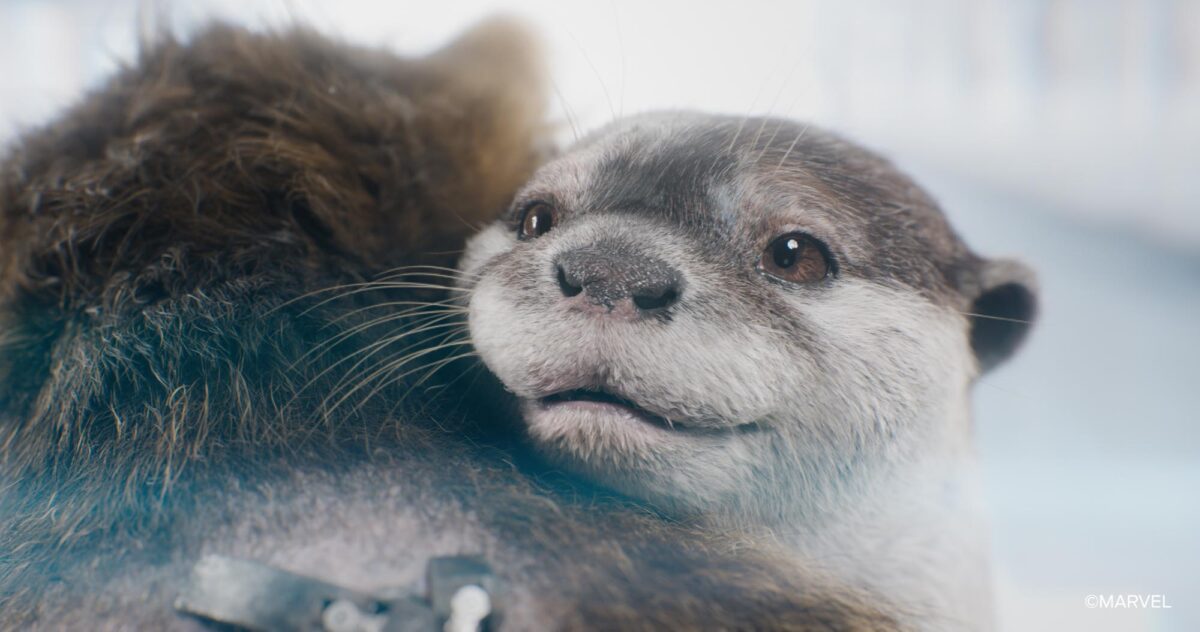
Each of the characters was designed by the concept department, these designs had most of the final details the characters would end up within the film, but naturally as still artwork, these original sketches did not outline how the mechanics would work in motion. The texturing and grooming had to be solved for the character but also complex physics questions. For example, when Lylla’s arms moved the question had to be solved how was that done inside this imaginary creature? Did it cause muscles in the shoulder to be activated in the same way they would be if her arms were not mechanical? As seen below the arm’s relationship to the otter’s body was a complex problem for animation to solve as the shoulder joint is actually outside the torso.
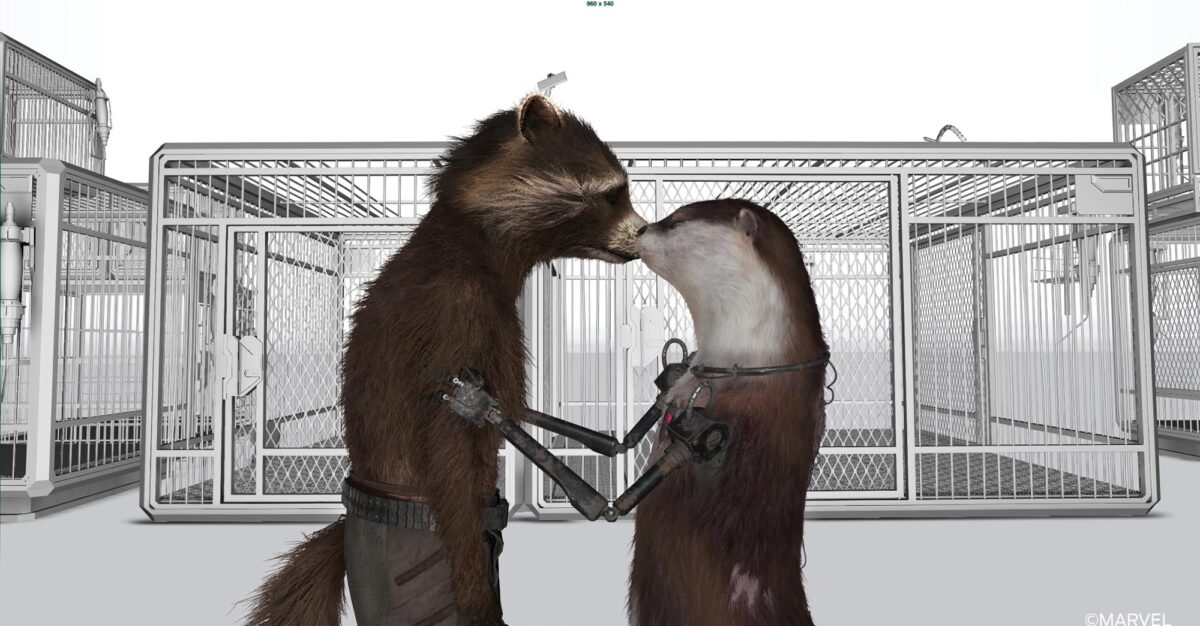
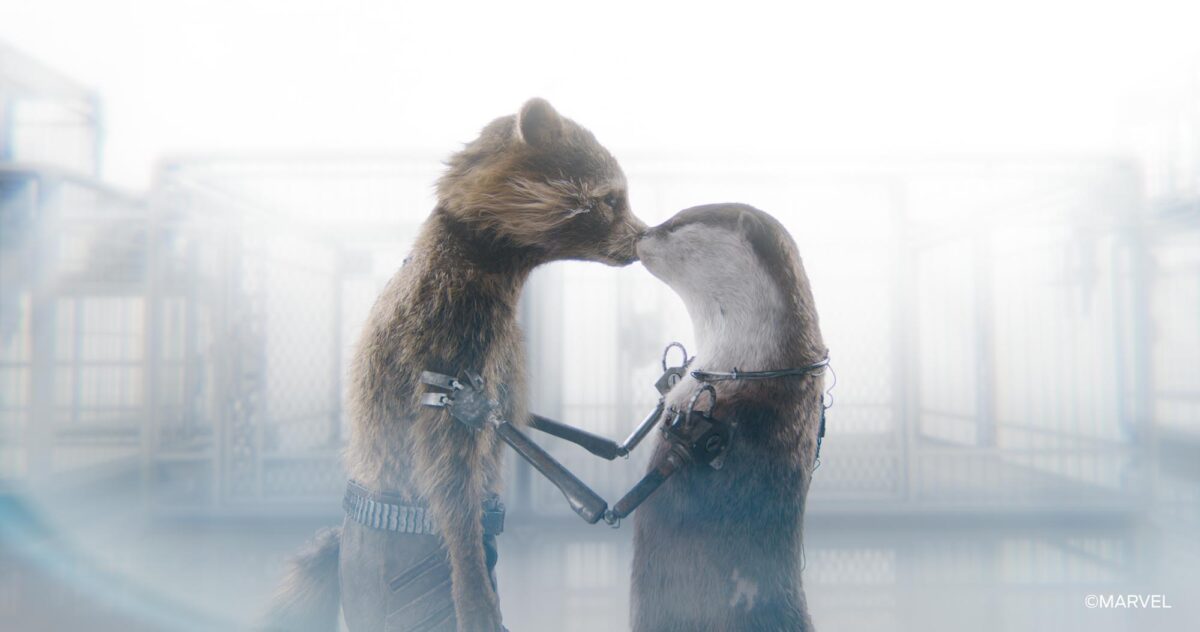
As with Rocket, the team made sure that the implants had a logical reason for being present, in addition to making the character look more and more human.
Floor
Mikaela Hoover played Floor the Rabbit. The challenge with Floor was allowing the character to be expressive when a vast amount of Floor’s face was covered. The way the arms were attached to the body of Floor referenced design choices made for GOTG Vol 1, when the audience saw Rocket’s back in the prison shower scene. A shot that was actually also done originally by Framestore.
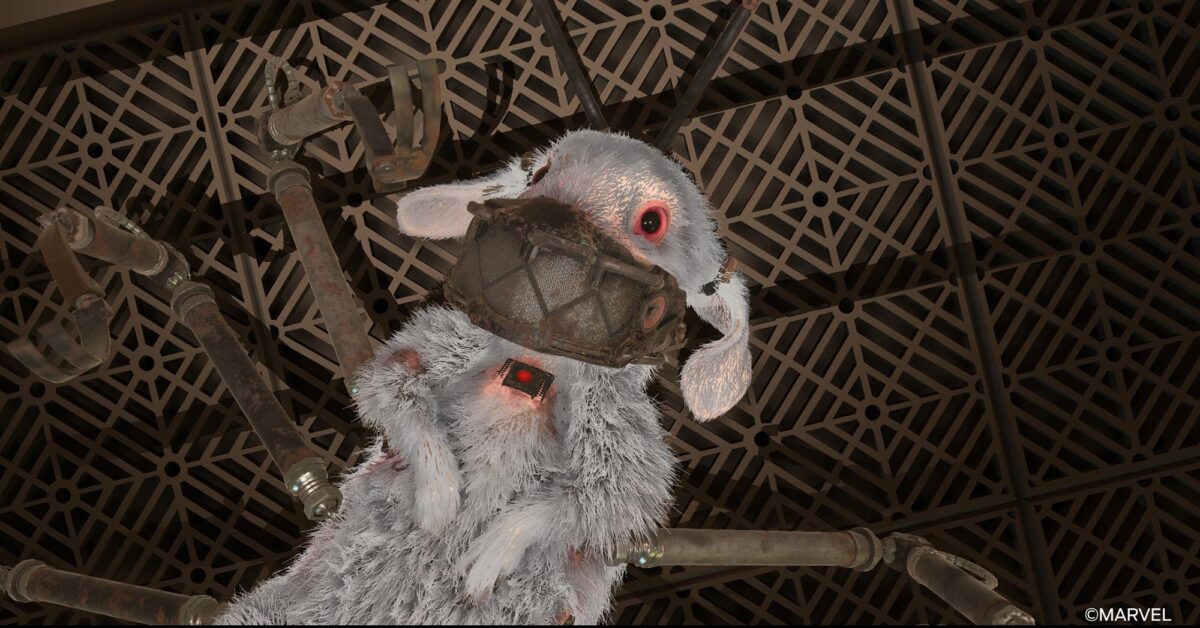
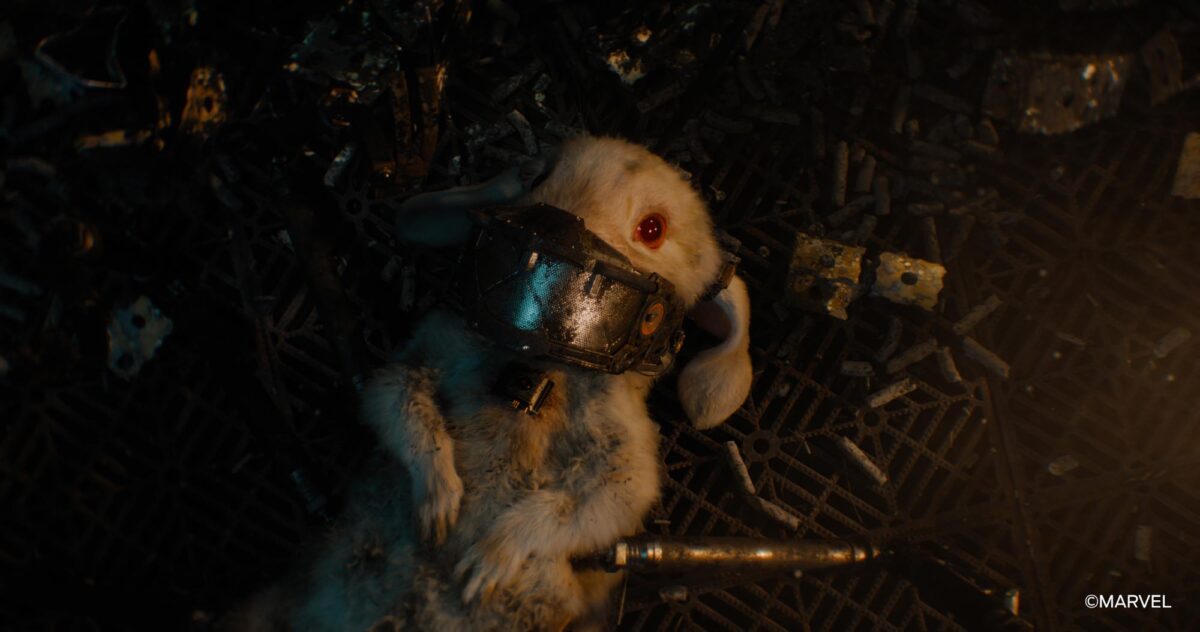
While Floor’s face is covered by the steel mask, the team added a zigzag engravement pattern on the metal to hint at a mouth for poor Floor’s mask works as a speakerphone-type device, but as much tech as Floor had, the team always referred back to a particular breed of rabbit with Floor’s distinct ears.
For these characters, the key was the eye highlights. As they have less white than normal human eyes, and thus without a specular kick the darks would be dark and appear sullen. In fact, the importance of eye highlights becomes somewhat of a running gag at Framestore. One of the animators even sang a joke song about Alexis Wajsbrot’s total focus on eye highlights and details. “We spent a huge amount of time on the eyes, to get them right. To make the eye highlight ping, the meniscus – the water line, the tear duct (nasolacrimal duct), and all of the other details just right,” he explains.
Teefs
Asim Chaudhry played Teefs the Walrus. Teefs is based on a walrus, and there was a lot of work reworking the character’s face to make the character work. While finalizing Lyall and her groom was the hardest thing to get finalled, Teefs was the most complex to solve in terms of blocking, general proportions, and how he could interact with the other characters, due to his scale.
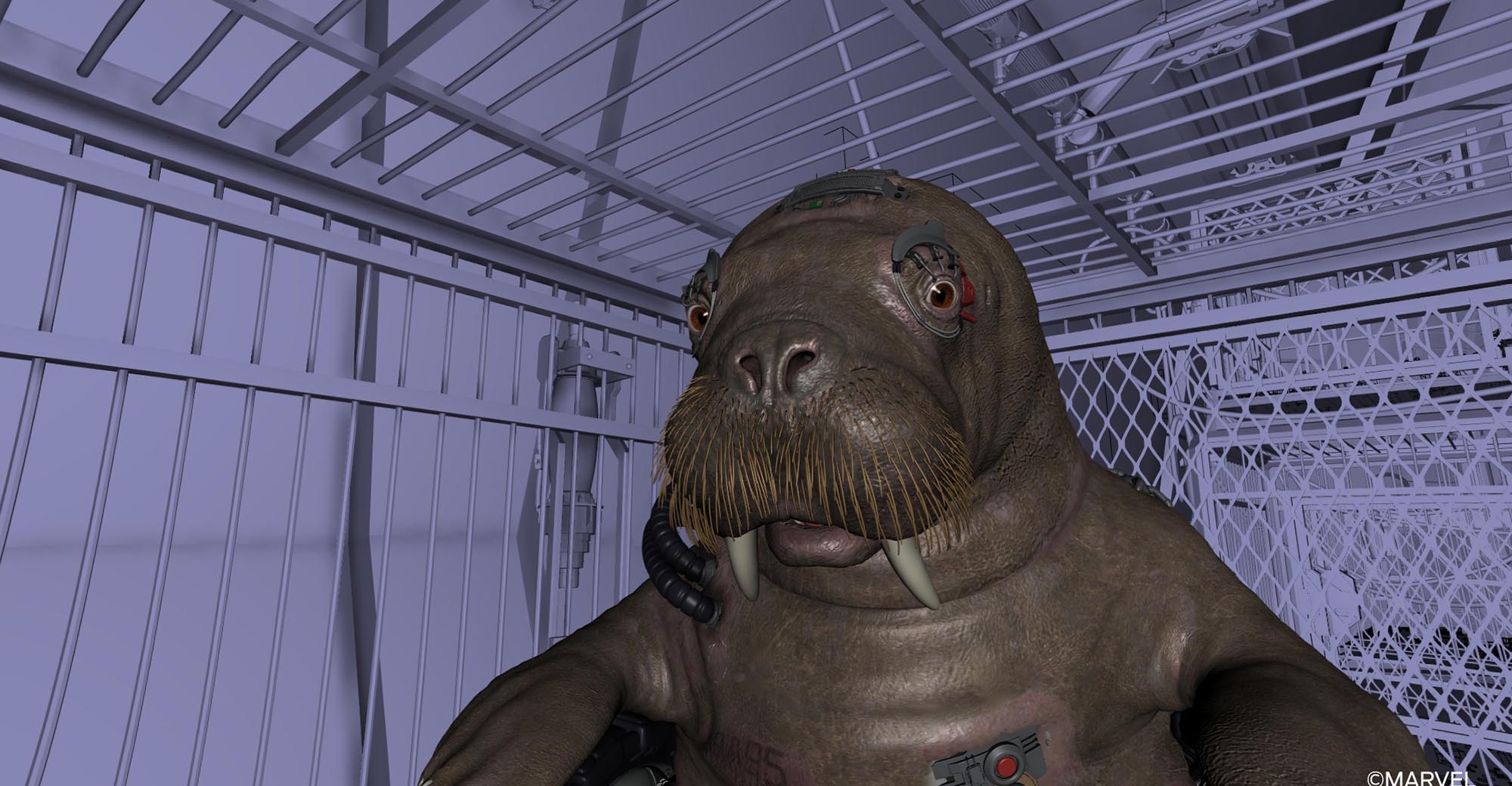
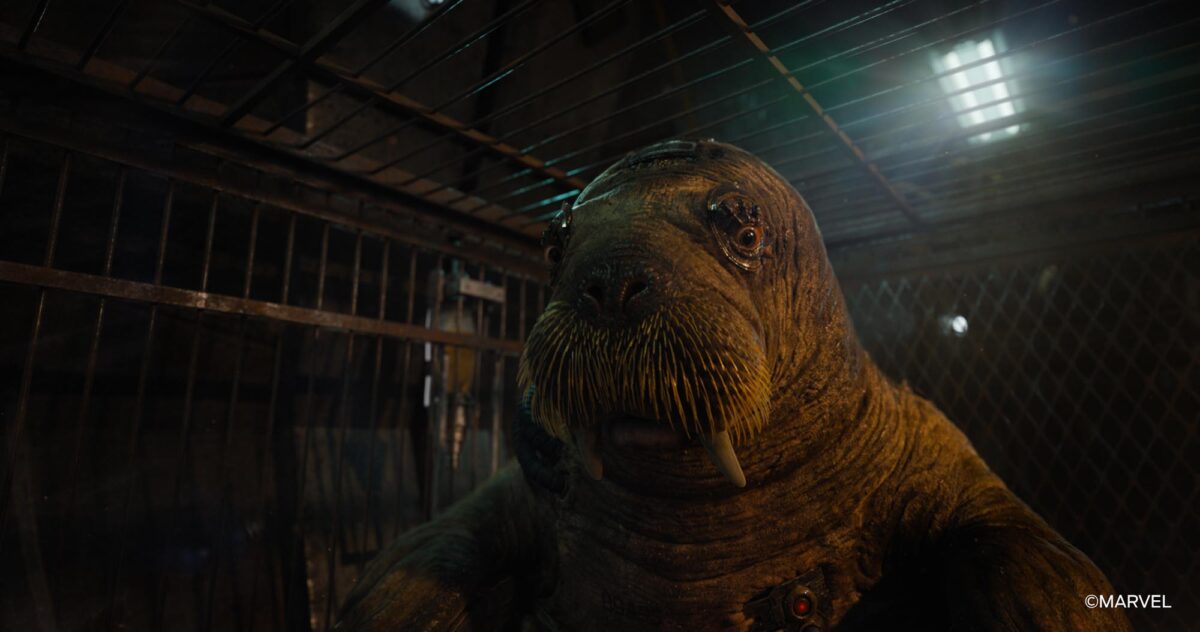
The team had a complex problem dealing with Teef’s scale relative to the other characters. This meant that the actual proportions of the walrus and even his facial proportions had to be adjusted on a per-shot basis. Alexis Wajsbrot feels that Teef was the hardest character to solve in terms of the broad brush strokes of scale, proportions, and block, but he was actually not the most difficult to get right once these main aspects were solved. In comparison, Lyllla was a natural height match to Rocket, and easy to frame up, but by far the hardest to get right in terms of her final look dev and animation expressions “to make her sweet at all times”.
Article content ref from: www.fxguide.com